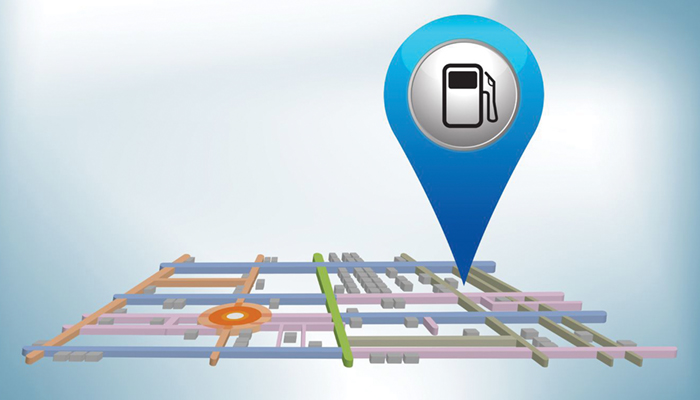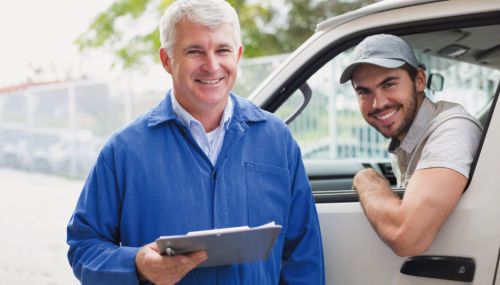All
Fill Your Car’s Gas Tank by Smartphone
by Ed Burke, Dennis K. Burke Inc.

There are a growing number of startups around the country that would like to replace a trip to the local gas station with on-demand fueling. Tap an app, and they’ll bring the gas to you, filling your car while you’re at work, or at night while you sleep. Surprisingly, the idea is catching on.
Touch fueling truck fleets and equipment are pretty common to most fuel distributors, but could on-demand fueling cars give us a glimpse into the future?
Integrating a smartphone app, most of these startups are making deliveries using pickup trucks fitted with 100-gallon aluminum tanks, certified meters, and a 50’ hose. They are careful to limit the size of their gas tanks to stay under limits outlined in the International Fire Code. Additionally, the trucks carry fire extinguishers, a spill containment kit, and traffic cones. The customer gets a paper receipt and a copy is sent to their phone. To their credit, most of these companies are hiring professional commercial drivers with hazmat training to make their deliveries.
New Regulations
Fueling cars from the back of a pickup was new territory for fire marshals and government officials to deal with, and there were public safety issues that needed to be addressed.
“The level of support we received from the City of Santa Clara has been invaluable,” said Booster Fuels’ founder and CEO Frank Mycroft. “City staff and leadership engaged many stakeholders to determine the best course of action in order to establish regulations for location, equipment and training which now set a high bar for quality and safety in the mobile fueling industry. Santa Clara serves as an innovative model of success which other cities can follow.” And other cities have followed. Now more than half a dozen cities in the San Francisco Bay area have provided approvals supporting Booster’s unique service model. A big selling point for city officials was Booster’s ability to reduce road congestion by eliminating first and last mile trips, especially during heavily congested peak commute times.
Business Models
Each of the fuel startups have slightly different business models with one common theme: owning and operating a truck is a lot cheaper than owning and operating a gas station. Beyond that, establishing concentrations of customers would be essential to profitability. Some of these startups market to business owners, offering on-demand fueling as a perk for their employees, having their cars filled while they’re at work, at a competitive price. Others are taking a community approach, signing-up neighborhoods where all the members on a street might get their car filled on Thursday nights.
With an eye on a national footprint, which of these business models are working and which are showing the most growth?
Yoshi is a weekly fuel delivery service currently operating in Greater Atlanta, Nashville and the San Francisco Bay area. Yoshi will bring the gas to your parked car at work or home. Yoshi’s $20 monthly membership ($10 for additional cars) includes one delivery per week. Fuel costs are additional, but priced competitively each day according to the local AAA average. Yoshi offers businesses incentive programs where employers cover the membership fee so the employee only pays for the cost of gasoline pumped. Yoshi uses Stripe to process their transactions.
Founded in 2014, Booster Fuels currently provides fuel “boosts” to thousands of customers every day in parts of Northern California and the Dallas-Fort Worth area. Booster custom-designed purple trucks can carry 1,000 gallons of gas. Booster’s focus is on working with businesses that have large corporate campuses and other corporate office parks. Booster’s trucks only conduct business on private commercial property under agreements with property owners, away from busy public roads and pedestrians. There is no subscription sign-up required, and no hidden fees associated with the service. Booster Fuels matches local prices.
A 2015 startup, Filld, currently serves the entire San Francisco Peninsula down through San Jose, and says it is rapidly expanding to other areas. The app allows you to schedule a Filld truck to come fill your car’s tank while you’re at work, home or even at the gym. Filld delivers gas 24/7. Using daily pricing data from OPIS, Filld customers pay the lowest price of the three gas stations closest to the delivery location, plus a small delivery fee, typically $3.
Connected Cars
How will connected cars benefit this new fueling niche? In November, Volvo announced that Filld has been selected to support Volvo’s new Concierge Services pilot to give select Volvo connected car owners the ability to order gas delivery with a click. The new Volvo Concierge Services provides Filld secure access to the car’s location, fuel level, and even the gas flap. Testing has started in the San Francisco area with the Volvo 590 and XC90 models integrating with the Filld platform and service so that their owners never have to stop for gas again.
So, does this mean the end of the corner gas station? Probably not, but most of these on-demand fueling companies believe the declining number of gas stations in urban areas is what largely
created the growing niche.
Related Posts
 8 Strategies for Effective Wealth Transfer in a Business Succession
8 Strategies for Effective Wealth Transfer in a Business Succession
Posted on June 16, 2025
 What Do Drivers and Technicians Want?
What Do Drivers and Technicians Want?
Posted on May 14, 2025
 Long-Term Demand and Equipment Investments
Long-Term Demand and Equipment Investments
Posted on May 13, 2025
 Show Me the Money
Show Me the Money
Posted on April 28, 2025
Enter your email to receive important news and article updates.
